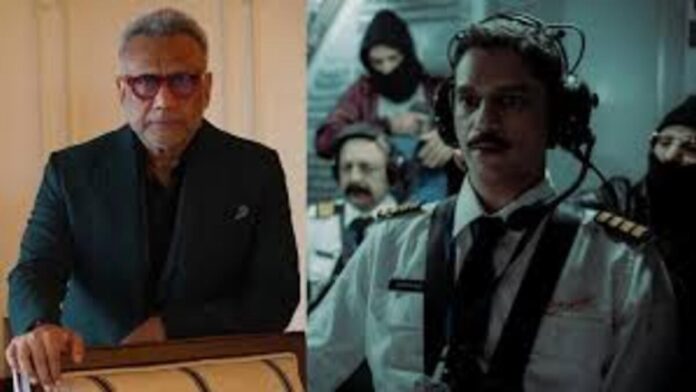How Not To Handle A Hijack became a case study based on the December 1999 hijacking of Indian Airlines 814, the complex way the week-long hostage scenario unfolded in various locations, and the aftermath that continues to this day. Or, to correct that, how to bumble your way out of a crisis, hoping someone else would step in and do it instead.
Five masked guys kept 180 people, including members of the crew and passengers, at gunpoint for seven horrifying days. During that time, one person died and another suffered serious injuries. “IC 814 The Kandahar Hijack,” which is based on the book “Flight Into Fear” by Captain Devi Sharan and Srinjoy Chowdhury and was directed by Anubhav Sinha, reenacts that tense week in which the plane passed through several airports (Kathmandu, Amritsar, Lahore, Dubai, and finally, Kandahar), with the hijackers’ tempers rising and multiple Indian agencies scrambling to discover a way out.
The scars that the survivors have are still painful after 25 years. In the still-visible mark made on Captain Devi Sharan’s (Vijay Varma) neck from pressing a pistol for countless hours. As well as those invisible to the naked eye, on the souls of those who could see clearly the need to take tough calls, but were not able to for reasons that the six-part series tries to unpack.
The series’ ability to maintain restraint—both in avoiding high-pitched melodrama and, more crucially, in keeping the background music muted—is one of its most effective features. The action is divided between the high-powered rooms in New Delhi, where numerous meetings driven by adrenaline and caffeine, and the interiors of the airbus. Despite some slackness in the first four episodes, these two episodes are absolutely terrific.
The other is how the defusing of the issue is shaped by the politics of the period when Atal Bihari Vajpayee was the prime minister, Jaswant Singh was the foreign minister, and India refused to acknowledge the Taliban administration in Afghanistan.
A number of the main players have either vanished into obscurity or have lost favour with the current ruling regime, which explains part of the bravery in being able to draw attention to what was considered as a severe blow to India’s firm stance against terrorism. Supported by Osama Bin Laden and Al-Qaeda, the hijackers demanded the release of several of their fellow countrymen who were being held captive in Indian jails, including Ahmed Omar Saeed Shaikh and Masoor Azhar, the commander of Harkat-ul-Mujahideen. The whispers of “we won’t do this, no matter the cost” subsided, and the swap of hostages for the terrorists of fear was carried out.
We see the backroom dealings, with its many pushes and pulls, the failure of Indian intelligence agencies, with IB and RAW officials going at each other, and the babus busy trying to push the bad news as far away as possible (the PM was informed of the hijack several hours after it happened): Naseeruddin Shah and Pankaj Kapur (standing in for Jaswant Singh) trade information, which could have been more pointed, spending as they do more time in walking to and fro between their stations; the weightier barbs and bickering happens between the men whose diplomatic and negotiating skills carry the day — Arvind Swami, whom we must see more of, Kumud Mishra, Manoj Pahwa (wonderful, as always, in a Sinha project), and Dibyendu Bhattacharya.
The part where the show nearly lost me is when it turns to two journalists, played by Dia Mirza and Amrita Puri, who are shown bickering over how to cover the story: how much to reveal, and how much to conceal, especially when a crisis is unfolding, in the interests of containing public hysteria, is something real-life newsrooms deal with all the time. But Hindi cinema and its creators just do not know how to do this aspect with any believability, so maybe they should desist.
Even though the same party is in power, the overall tone could have been sharper. This is especially true when it’s revealed that the NSG (led by Sushant Singh in a far too brief appearance) arrived too late for a rescue operation, that bureaucrats hesitated and delayed, and that the authorities caved and released the three terrorists, who were even escorted to Kandahar by FM Jaswant Singh (we see a glimpse of the real-life Singh, as well as Vajpayee in the series).
So it makes sense that the true heroes—confined to the plane—should triumph handsomely. How would you respond if you found yourself in a contained area with erratic guys and guns, no sanitation, overflowing and clogged toilets, and an intolerable stench? The team had the duty of maintaining everyone’s composure. As the struggling captain who perseveres through the hardship despite the very real fear of the unthinkable—what if they all die?—Vijay Varma is excellent. Aditi Gupta Chopra and Patralekha both do a good job portraying the two flight hostesses who keep their flock together, with the latter doing so in some scenes even better.
For the most part, IC 814 is adroitly directed film that is beautifully constructed. Numerous Indian films have been made about terrorists and hostage situations; some of these films are superior to others. This one keeps it grounded, even when it’s in the air, and manages to distribute the tension evenly through-out.
Even after so many years, we are grateful for the lives that were saved, layered with a sober realisation of what the operation, whose deepest layers will forever stay hidden, resulted in.




